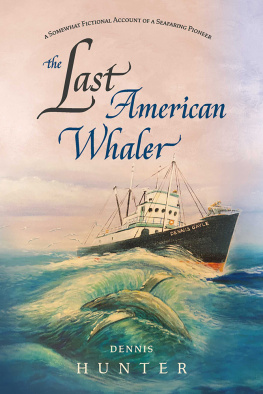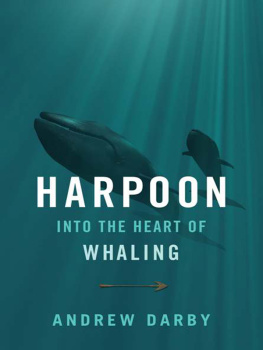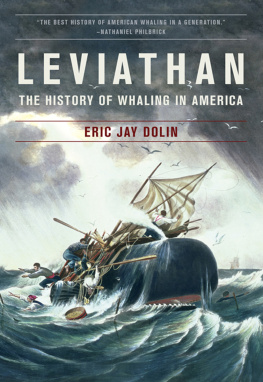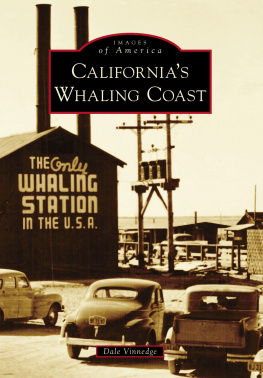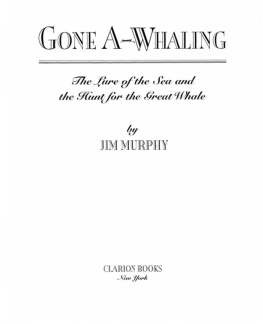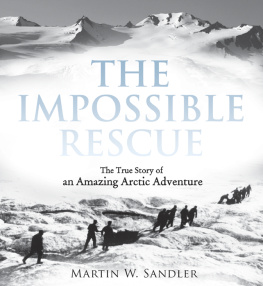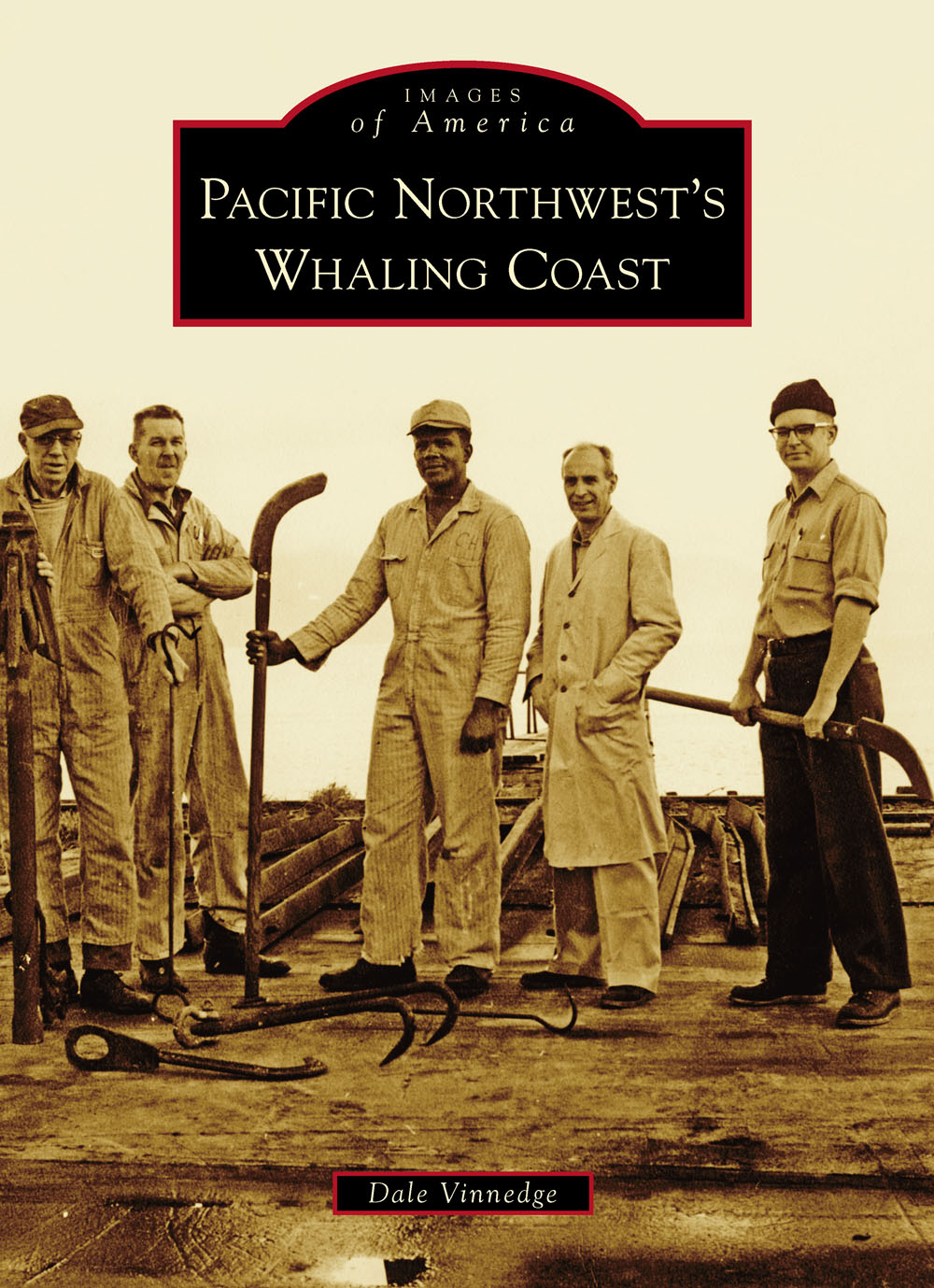
IMAGES
of America
PACIFIC NORTHWESTS
WHALING COAST
ON THE COVER: The Bioproducts Company flensing team prepares to flense another whale. From left to right are Alva Elliot, harpooner; Harold Cunningham; Orvo Puppo; Mark Dozier, flening expert from California; Lyle Anderson; and Richard Carruthers, president of Hvalfangst Whaling Oregon and Bioproducts Inc. Flensing is a Norwegian term referring to cutting the fat and blubber off whales.
IMAGES
of America
PACIFIC NORTHWESTS
WHALING COAST
Dale Vinnedge

Copyright 2014 by Dale Vinnedge
ISBN 978-1-4671-3257-2
Ebook ISBN 9781439648506
Published by Arcadia Publishing
Charleston, South Carolina
Library of Congress Control Number: 2014941230
For all general information, please contact Arcadia Publishing:
Telephone 843-853-2070
Fax 843-853-0044
E-mail
For customer service and orders:
Toll-Free 1-888-313-2665
Visit us on the Internet at www.arcadiapublishing.com
CONTENTS
ACKNOWLEDGMENTS
I wish to acknowledge the assistance of Jeff Smith, the director of the Columbia River Maritime Museum (CRMM) in Astoria, Oregon. He assisted in finding and making available photographs from the museums collection. The Bioproducts photographs came from Richard Carruthers and family, and are on deposit with the CRMM. Carruthers was the president of Bioproducts Inc. and Hvalfanst Whaling Oregon, the two companies that caught and processed whales from Oregon and Washington in the 1960s.
I would also like to acknowledge the work of Robert Lloyd Webb, who published On the Northwest in 1988. That book was my primary source for research on whaling in British Columbia and surrounding areas. I would like to thank the volunteers and staff at the Vancouver Maritime Museum, the Columbia River Maritime Museum, and local libraries and museums for their interest in developing works in maritime history, and also my editors at Arcadia Publishing.
Unless otherwise noted, all images are from the authors collection.
INTRODUCTION
There were several styles and methods of whaling in Pacific Northwest waters. The earliest whaling was practiced by natives from the coasts of British Columbia and Washington. There was also early whaling from Alaskan coastal waters, but the type of whales and the methods of whaling were different.
Information does not exist to show that Oregon natives went whaling. They did, however, utilize drift whales for meat and fat. Whaling was practiced off the coasts of Oregon and Washington by Yankee whalers returning from the Arctic every year from the 1850s. Whalers were known to occasionally anchor in protected bays and harbors on their way south to San Francisco and Hawaii for refitting every fall.
After 1900, modern whaling methods using steel catchers and harpoon guns were being established in British Columbian, southern Alaskan, and Washington waters. This development continued until whaling was ended in the 1970s. Whaling in British Columbia was done from Vancouver Island, and there were quite a few whaling stations scattered around the island. Southern Alaska had several stations, with the most utilized at Akutan on the Aleutian Islands. In Washington, whaling operated in roughly the same timeframe as in British Columbia and Alaska. The Bay City station sent catchers to Oregon waters who whaled to near the California border.
The use of whale meat for human consumption was experimented with in the first half of the 20th century. Whale meat was made available to butchers and restaurants and had some success, particularly during the war years when beef was not available. Even though it was supported by governments with fliers, articles, and even recipes, when World War II ended and beef became available again, the market for whalemeat waned.
One
EARLY SHORE WHALING
From the 1850s to the 1890s, shore whaling was a common practice in Californiafrom Crescent City in the north, to the tip of Baja California in the south. They used boats powered by sail and oars. Whales were chased in whaleboats, and, once the whales were harpooned, the whalers would stay fast with stout ropes. As the whale tired, the whalers would catch up and try to lance it and kill it. After the whale died, they would tow it back to a land station, where tryworks were used to process the whale.
Whaling off of British Columbia began in the 1860s, with a company started by Thomas Welcome Roys and James Dawson. Dawson, who was from Scotland, and a partner named Warren attempted to take whales in through Saanich Inlet in 1866, though this effort ended in failure. They managed to harpoon three whales, but, due to bad weather, lost all three. Dawson tried again with a new partnera sea captain named Abel Douglassand, according to Robert Webb, two Californians named Bruce and Woodward. The group acquired a small schooner named the Kate and began whaling in Saanich Inlet. They used bomb lances to capture whales. These were state of the art in 1868, when the operation began. They set up tryworks on Saanich Island, and the operation did moderately well that year. They acquired another ship, the Industry, to bring down oil. In 1868, they brought out about 100 barrels of oil for sale.
In 1869, the Dawson and Douglass Whaling Company moved its equipment to Cortez Island. Later, the Kate was damaged when it ran up on a rock. The season was ultimately disappointing and ended with only 14 whales taken. In 1869, the operation joined forces with the Lipsett Whaling Company and formed the Union Whaling Company, which lasted only about six months and landed only four whales. Dawson and Douglas then reorganized their company in June 1870. Lipsett went on to establish the Howe Sound Company and organized a group of men to go to Howe Sound in the summer. In 1871, Dawson and Lipsett joined forces again to form the British Columbia Whaling Company, while Douglas and Strahan sailed aboard the Industry. The companies returned with 20 and 15,000 barrels of oil respectively, but, due to poor prices at the time, the season was deemed a failure.
Thomas Roys was a well-known whaling captain who had discovered bowhead whales in the Bering Strait in 1848. He had also invented his own type of whaling harpoon, and a device for raising whales that had sunk to the bottom. Roys made two cruises for whales, sailing in the 83-foot Emma in the summer and fall of 1868. He reported bad weather and problems with his equipment upon returning to Victoria. Roys went on to form the Victoria Whaling Adventurers Company. He whaled from several locations, but had trouble with fog and broken equipment. Finally, the Emma broke a propeller and was towed back to Victoria. Within a week, the company had been disbanded.
Roys returned to Victoria in early 1860 and sent the Emma to Barclay Sound, where a building and a tryworks were built. Roys had trouble with the weather for two months and tried other locations, but still did not fare well. Captains Roys and Dawson retired and Douglass never whaled again, but he had success in other businesses. The whales were given a rest for the next few years. There may have been a few attempts to go whaling in that period, but none were notably successful. It would take an equipment upgrade to revitalize the local whaling industry.
Another whaling operation was started in 1879, when the Northwest Trading Company built a shore-based whaling station at Killisnoo. In 1878, a large number of finback whales were observed in the bay, off of the new trading post. Whaling was again attempted in 1880, and seems to have continued until 1882, when a whaling bomb exploded on a boat and killed Tith Klanea local Indian medicine man who was employed by the Northwest Trading Company. After his death, the local tribe demanded reparations in the form of 200 blankets. The company refused the payment and called upon the US Navythen serving as the government of Alaskato mediate. The situation led to the shelling of Angoon on October 26, 1882. In 1973, the federal government finally paid $90,000 in reparations for the shelling incident. This incident led to the formation of local civil government in 1884, and eventually to Alaskas statehood.
Next page

